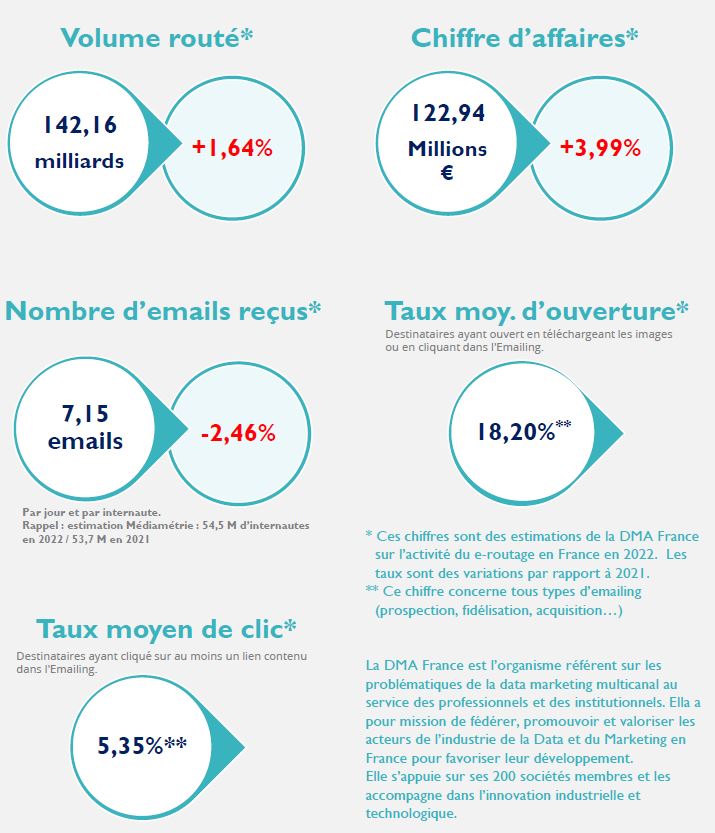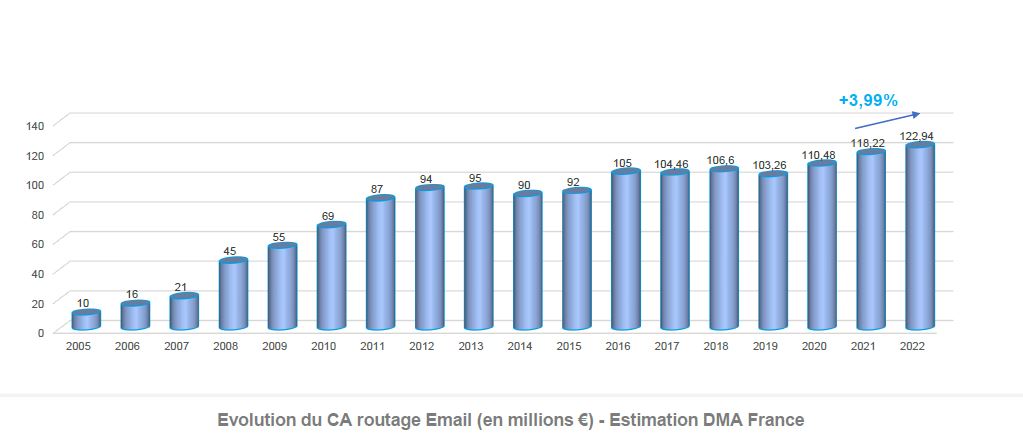Email, a multifunctional communication channel
Email has become an indispensable tool for consumers and citizens alike. In fact, according to a survey carried out by ARCOM, more than 6 out of 10 French people could not do without email .
It is precisely the importance of email in the daily lives of the French that justifies its increased use by businesses.
Email routing, a development lever for organizations
If email is an indispensable tool for the French, it's just as indispensable for organizations. In fact, thanks to email scraping, they can :
- Generate leads
- Publicize their offers
- Reactivating dormant customers
- Advertising promotions
- Facilitating direct purchases
- etc.
In the middle of the sales process or conversion tunnel, BtoB emailing can be used to sell, build loyalty or support customers. Since it can be used to achieve a multitude of objectives, email plays a direct part in the success of an organization . And companies are well aware of this, as they increase their investment in email routing. As proof of this, emailing activity is set to grow by +4% in 2022, with total sales of 122.94 million euros (source: DMA France study).

Source: DMA France 2023
Good to know: depending on the objective, emails can take different forms, such as newsletters, transactional communications, invitations, live conversations and so on.

B2B email campaign performance
To grow their business with B2B emailing, companies need to run high-performance campaigns. To achieve this, there are several indicators available.
Traditional key indicators
In many cases, companies are content to measure the performance of their B2B email campaigns using two main KPIs:
- Open rate : the number of emails opened in relation to the total number of emails sent. This performance indicator measures contacts' interest in emails.
- Click-through rate: this is the number of clicks on a link in an e-mail (e.g. to download a document, buy a product, sign up for a webinar, etc.) as a proportion of all e-mails sent. This indicator goes even further, as it measures contacts' interest in the proposed offer.
Other performance indicators
Beyond click-through and open rates, companies can also use other equally relevant KPIs. Here are a few examples:
- Conversion rate: conversion also depends on the campaign objectives. It may involve improving the number of visitors, the number of transactions carried out, etc.
- Revenue generated by emailing : this indicator is relevant if the aim of your email is to generate a sale. But this is not always the case.
- Delivery rate: again, this applies more to transactional emails than to informational or promotional ones.
- Return on investment (ROI ): this compares the revenues generated by emailing with the total costs incurred. This is an excellent way of determining the success of your emailing strategy.
- Inbox placement rate: despite increasingly effective deliverability tools, emails don't always arrive in the target's inbox. If some users take the time to move your emails into their main inbox, it's because they're genuinely interested in your brand.
- Read/skim/delete rate: this identifies the number of users who simply open the mail, skim it and delete it.
In all cases, it's vital to select the right indicator for your objectives.
Continuous improvement of emailing strategies
To improve the performance of their B2B email campaigns, companies can implement a number of different actions.
A/B testing
This involves testing different elements of an email campaign. For example: the subject line, images, design, introduction, CTAs, etc. This enables you to identify what motivates your contacts to open an email, click on a link, read the entire content or interact with you.
A/B testing is an essential part of digital marketing. Indeed, if you want to improve your B2B emailing strategy, you need to be constantly testing.
Quality control to improve performance
Here again, it's all about testing your emails. But before sending. Above all, this allows you to check the appearance of your e-mails. This is all the more important as web users read your emails on computer, tablet or mobile. You therefore need to send responsive design campaigns that adapt to all types of devices.
Frequency of dispatch
To maintain your audience's interest, you need to send B2B emails frequently, without being too invasive. It's all about finding the right rhythm to meet your audience's expectations. A/B testing can help you do just that.
Good to know: in 2023, the number of emails per Internet user per day fell by 2.46%. Internet users now receive an average of 7.15 e-mails per day. This reduction in the number of e-mails reflects a greater awareness of user expectations.
Customer-centric emails
Improving B2B emailing strategies means personalizing messages. Whatever they are, companies need to send customer-centric emails. In other words:
- The right tone: communicating with words and a tone that match the target's universe. This will enable the target to better identify with the brand being promoted.
- Responding to expectations: emails must address the target's concerns and issues.
- Interest: interest must be aroused from the very first lines (and even before, through the subject line).
To achieve this, it is essential to develop a real understanding of the customer .
More challenges for a successful emailing strategy
While companies are aware of the benefits of email marketing, 40% of them say they are (at best) moderately satisfied with their email strategy (source: Mailjet Email Marketing Report 2023).
Several factors explain this lack of satisfaction with current campaigns:
- Lack of clear objectives
- Deliverability problems
- Lack of time or interest
- The difficulty of standing out in the inbox
To meet all these challenges, it's essential to enlist the support of B2B data marketing professionals.... Like Ellisphere.
